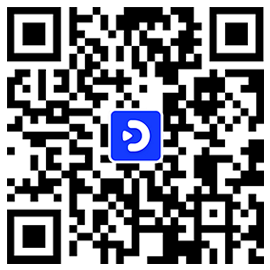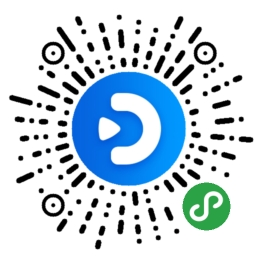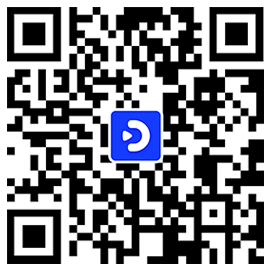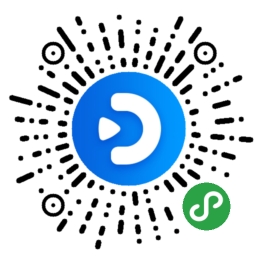Unity(U.US)2025年第一季度业绩电话会
文章语言:
简
繁
EN
Share
Minutes
原文
会议摘要
Unity is transitioning to its new AI platform, Unity Vector, ahead of schedule, aiming to reduce cloud costs and accelerate revenue growth, particularly in its ad business. The company reports strong financial performance, driven by robust growth in both its Grow and Create segments, and is leveraging data across its ecosystem to optimize performance and deliver better returns on investment for customers. Unity 6 has seen significant adoption, and the company is optimistic about the future potential of AR and VR gaming and entertainment.
会议速览
In the first quarter of 2025, Unity experienced significant momentum, driven by a culture of execution, reestablished customer trust, and accelerated product innovation. The company surpassed its revenue and adjusted EBITDA guidance by 5% and 29% respectively, showcasing strength in both growth and creation segments.
The migration of Unity's Ad network to the new AI platform, Vector, has been completed ahead of schedule, providing a 15-20% lift in installs and in-app purchases. This enhancement marks a significant milestone in the company's commitment to continuous product innovation and competitive mobile marketplace navigation. Despite the recent Android migration, the focus remains on optimizing user acquisition capabilities and improving AI daily for sustainable revenue growth.
Unity's latest version, Unity 6.1, has seen significant adoption and enhancements, powering growth in gaming and expanding into non-gaming industries with notable customer acquisitions. The platform's capabilities in AR and VR, as well as its success in awards and partnerships, highlight its leading role in the industry.
In Q1 2025, Unity surpassed its guidance, reporting a revenue of $285 million and an adjusted EBITDA of $84 million. The revenue was driven by the accelerated rollout of Unity Vector and a shift towards a high-margin subscription business, now constituting nearly 80% of create revenue. Adjusted EBITDA margins expanded by 200 basis points year-over-year, with improved cost management and operating leverage. Free cash flow improved by $22 million year-over-year, and the company reported an adjusted EPS of 24 cents, focusing on minimizing shareholder dilution and stock comp expense.
Unity successfully priced a $690 million convertible offering in February, using the proceeds to repurchase $688 million of 2026 notes, smoothing its debt maturity profile. For Q2 2025, the company anticipates total revenues of $415-$425 million and adjusted EBITDA of $70-$75 million, driven by improved performance of Unity Vector, despite declines in certain legacy Ad products. The subscription business is expected to maintain momentum across gaming and industry verticals, although Create revenues may see a slight sequential decline due to runoff in non-strategic revenues.
The company discusses the positive impact of the Vector rollout on advertiser spending, noting a significant lift in IIP and increased spending from customers. On the subscription side, strong revenue growth is attributed to the adoption of Unity 6 and a mix of subscriber growth and the effects of prior pricing increases.
The discussion highlights a cautious strategy towards enhancing the Ctor model within the Unity ecosystem, emphasizing thoughtful progression and quarterly guidance adjustments for the remainder of the year.
The Vector launch has been successfully accelerated, positively impacting the business with notable increases in advertiser scale and user quality, leading to higher customer spending.
The company is heavily investing in the vector business to modernize the advertising industry, seeing measurable improvements for customers and remaining confident despite potential macroeconomic challenges. The majority of their customers are game makers, and historically, gaming has been relatively insulated from macroeconomic shifts, further bolstering their position.
An inquiry into the current stage of transitioning to Vector, including details on R&D resourcing and organizational readiness for future growth as of May 08, 2025.
The company is heavily investing in machine learning, including hiring new teams and leadership, increasing GPU and CPU resources, and reorganizing go-to-market teams to focus on both new and legacy ad products. The goal is swift, sharp, long-term growth in the advertising segment, with an emphasis on taking market share both internally and externally.
A discussion occurs regarding the current status of Brentfield at Jeffries on May 8, 2025.
The company recently completed the migration to Vector 1.0, marking the early stages of leveraging their platform's advantages for ad networks and direct customer connections. Strategic focus lies in utilizing these opportunities to enhance margins and efficiency, with cost savings expected from operating a single model instead of two in parallel.
The company started the year with 19% EBITDA margins, focusing on accelerating growth, particularly in the ad business, leveraging Vector's 80% gross margins. Priorities include operational prudence, automation, rationalizing software spend, and strategic headcount management, all aimed at revenue growth acceleration while monitoring profitability.
On May 8, 2025, a participant from Stifel confirms audio quality during a conference call, indicating clear communication.
Despite continued strong double-digit subscription revenue growth, the company sees a decline influenced by the reduction of non-strategic revenue, as seen in the second quarter after a $15 million disclosure in the fourth quarter.
The company has officially transitioned from legacy models to Vector technology as of May 08, 2025, with no specific hard cutoff date previously set. The move to Vector is expected to reduce cloud costs in the latter part of the year.
Participants discuss pressures on iron source, tap joy, and CE products in Q1, anticipating changes in Q2, particularly regarding Vector. They also explore improvements in data flow and Roas as Vector seasons, including potential updates on cross-stats access.
The company is aggressively investing in vector technology, impacting the iads business, and aiming to gain market share from competitors. A major focus starting in the second half of 2025 will be utilizing consumer behavior insights to enhance value for advertising and editor/engine customers, optimizing live services and improving player acquisition efficiency.
The speaker discusses the strategic management of two ad networks, emphasizing the unique value each offers to different customers and genres. Despite the competitive marketplace, the goal is to maximize performance of both networks, catering to varying customer needs and allowing market dynamics to dictate spend distribution.
Despite sunsetting the legacy unity model, the company anticipates stable gross margins and EBITDA performance in the second quarter, with no significant impacts from nonstate GIC revenue changes.
The new vector-powered DSP products have yet to show significant financial impact due to their early stage of launch and ongoing testing by advertisers, despite already demonstrating improved performance and returns.
The company reported $17 million in non-strategic revenue for Q1, with expectations of $30 million for the full year, trailing off after Q1 and constituting under 2% of total revenues.
Subscription revenue grew by 13% year-over-year in the first quarter, driven by success in non-gaming industry segments, new customer wins, and price improvement strategies impacting the P and L.
The majority of revenue in the growth segment is attributed to Unity Vector, which is receiving significant investment due to its size and growth potential. This investment and machine learning advancements are expected to benefit all Unity ad products over time.
The primary focus is on enhancing user acquisition due to its significant short and long-term potential, with mediation considered secondary as the company emphasizes its role as a development platform.
The speaker discusses the encouraging growth and performance of ad spend, noting a significant improvement over prior peak levels. They mention the recent launch of a product that exceeded expectations in performance and emphasize the ongoing learning process in the business. The evaluation period for performance marketing budgets varies among advertisers, with most optimizing for long-term returns.
Despite macroeconomic disruptions, the company's performance and advertiser spend are primarily determined by execution quality and ROI, with increased spend observed as performance improves.
要点回答
Q:What are the key achievements of Unity in the first quarter?
A:Unity achieved significant momentum in the first quarter by building a culture of execution and discipline, reestablishing trust with customers and the community, and accelerating the pace and quality of product innovation. This led to exceeding revenue and adjusted EBITDA expectations, with a 5% revenue beat and a 29% adjusted EBITDA beat compared to the high end of guidance.
Q:What benefits are customers experiencing from Unity Vector?
A:Customers are experiencing a 15% to 20% lift in the number of installs and the value of in-app purchases when using Unity Vector in iOS compared to the old model. The Android migration is also showing a similar trajectory. This indicates a higher return on investment for Unity's advertisers.
Q:How is the Unity 6 release impacting the company's financial results?
A:While the full impact of Unity 6 on financial results is not yet seen in Q2, there is a strong belief in the future of the grow business, with investors expected to see a lift in financial results from Unity Vector in future quarters.
Q:What is the significance of Uni 6.1 and its new production testing methodology?
A:Uni 6.1 is significant as it marks the first release that leverages a new production testing methodology, ensuring software stability while allowing for the adoption of new features. This enhances the platforms developers can reach and provides valuable feedback for future engine enhancements.
Q:How is the Unity platform expanding beyond gaming?
A:The Unity platform is expanding beyond gaming into other industry verticals, resulting in 9 straight quarters of sequential revenue growth and meaningful year-over-year revenue growth. New customers include Philips, Siemens, and Toshiba, using Unity for various purposes such as surgery simulation, workforce development, and creating digital twins.
Q:What is the financial performance of Unity in the first quarter?
A:Unity exceeded the top end of its guidance in the first quarter with revenue at $285 million and adjusted EBITDA at $150 million. Growth revenue declined 4% year over year, while create revenue fell 8% year over year. However, both segments performed better than guidance, with grow revenue showing upside and create revenue being driven by the transition away from low-margin professional services.
Q:How did R&D costs change, and what is expected for the back half of the year?
A:R&D costs are up at $10 million over the last few quarters due to heavy investment in Unity Vector. It is expected that those costs will normalize in the back half of the year as the company transitions away from running both legacy and new Unity ad models in parallel.
Q:What was the free cash flow for the first quarter and how does it compare to the prior year?
A:Free cash flow in the first quarter was 7 million, an improvement of $22 million year over year.
Q:What are the expectations for total second quarter revenues and adjusted EBITDA?
A:The expectations for total second quarter revenues are $415 million to $425 million, and the adjusted EBITDA is expected to be $70 million to $75 million.
Q:What is the forecast for the subscription business and Create segment in the second quarter?
A:The subscription business is expected to show continued momentum across gaming and industry verticals, while the Create segment is expected to have a slight sequential decline due to an expected runoff in non-strategic revenues.
Q:What is the response from customers using Vector in terms of increased spend?
A:Customers using Vector are responding positively, with an increase in spend due to improved performance, driving return for advertisers and encouraging them to spend more, especially as they do not have fixed budgets and can adjust spending up to their Roas targets.
Q:What are the reasons behind the strong growth in subscription revenue?
A:The strong growth in subscription revenue is attributed to both the core business growth and the impacts of older pricing increases, rather than the recent significant price increases which are expected to take effect in the back half of the year.
Q:What is the expected trajectory for improvements in the model for the back half of the year?
A:The trajectory for model improvements is positive and is currently pacing out in front of expectations. The business for Ctor is learning and improving through small daily iterative improvements, with some sources of data being added recently. Although it's a new business for Unity, it's ahead of schedule and there are measurable increases in the scale provided to advertisers and the quality of users obtained.
Q:What is the company's strategy with regards to the modernization of the advertising business and the vector business?
A:The company's strategy is to focus on driving vector and vector revenues and investing heavily in the vector business for long-term fundamental competition in a different way. They have delivered a brand new system that is providing measurable improvements for customers and plan to continue building on that.
Q:What are the reasons the company is not seeing any noticeable impact from macroeconomic factors?
A:The company is not seeing any noticeable impact from macroeconomic factors due to the historical insulation of gaming from such movements, its efficiency as a form of entertainment, the resilience of free-to-play mobile games, and the focus on return on ad spend by advertisers rather than sentiment-based spending cuts.
Q:What is the timing and sequencing of the transition to Vector, and how is it affecting the R&D staff and resourcing?
A:The company has significantly increased investment across the board for machine learning, brought in new leadership, hired new teams, allocated resources to GPU and CPU, and reorganized their go-to-market teams during the transition to Vector. This transition affects R&D staff and resourcing by reallocating resources to support the new system and its growth.
Q:What are the big milestones for the rest of the year related to Vector, and what is the strategy for cost base and margin efficiency?
A:The company considers the Vector migration as just the beginning and not a specific milestone. The strategy for the rest of the year involves continuing the process of investment, learning, and focusing on opportunities that provide fundamental advantages, such as a first-party relationship with customers and a direct connect to billions of customers through their runtime. Cost-wise, the plan is to operate only one model, which is expected to be more cost-effective.
Q:What is the priority for the business in terms of profitability and growth?
A:The priority for the business is to resource the business to accelerate growth, particularly of the ad business.
Q:What measures are being taken to improve operational efficiency and EBITDA margins?
A:The company is putting a lot of resources into Vector with 80% plus gross margins, being thoughtful and prudent in operational management, focusing on automation, managing headcount, and rationalizing software spend.
Q:What factors contributed to the sequential decline in subscription revenue growth?
A:The sequential decline is attributed to a step-down from non-strategic revenue previously disclosed, which is now coming off the business in the second quarter.
Q:Is there a specific date for discontinuing the legacy models, or is it performance-based?
A:The discontinuation of legacy models will not occur on a specific date; it is performance-based and has already happened with the launch of Vector.
Q:Has there been any pressure on IronSource or similar products due to the focus on Vector?
A:There has been some pressure on the iads business and it is expected to move some share from competitors as the company gains more insights and returns on investment.
Q:How will the data flow improve as Vector continues to season and the model evolves?
A:The company is focusing on utilizing insights from consumer behavior to bring value to advertising customers and engine users, starting from the back half of the year onward.
Q:What new insights can be provided to game developers and how can these insights impact their business?
A:The company can provide greater insights to game developers on player behavior, spending, and game performance, which can help them optimize their live services and acquire the right kinds of players for their games.
Q:What is the primary strategy for the company moving forward?
A:The primary strategy is to deliver the value derived from consumer insights to customers, which the company believes is unique in the industry, over the next several years.
Q:What is the context regarding the company's ad networks?
A:The context provided is that the company operates within the market with both their ad networks - the una network and the audience for ad network - and they offer different value to different kinds of customers on various geographies or genres of games. Performance varies across different networks and even between different games.
Q:Why does the company plan to continue offering both products to customers?
A:The company plans to continue offering both products to customers because they believe it is not a zero-sum game between the two networks they own. They want all their networks to perform as well as possible, and customers will then allocate their spending across the whole marketplace accordingly. Additionally, they emphasize the importance of having different ad products that provide value to different customer sets.
Q:What is the impact of sunsetting the legacy Unity model and how will it affect gross margin?
A:The impact of sunsetting the legacy Unity model is that the company will run on one model through the entirety of the second quarter. They expect that this change will not cause gross margin to be down sequentially from the first quarter. The gross margins are expected to remain stable into the second quarter, and the EBITDA trajectory is anticipated to be stable with the current EBITDA performance in the first quarter.
Q:What are the reasons behind the lack of discernible financial impact from the new vector powered DSP products?
A:The lack of discernible financial impact from the new vector powered DSP products is attributed to two main factors: the early stage of the new models, as they have only just been launched and rolled out to customers, and an internal transition from the Unity ad network to the Iron Source ad network. There are internal puts and takes due to this transition, and the company is investing aggressively which is causing some movements that mask the upside in financial performance.
Q:How much non-strategic revenue was there in the first quarter, and how is it expected to contribute to full-year revenue and beyond?
A:There was about $17 million of non-strategic revenue in the first quarter, and the expectation is for $30 million for the full year. This non-strategic revenue is expected to trail off in the second quarter and beyond, with a step-down in contributions after that. Although it is a small part of the company's total revenue, representing less than 2%, it allows for more clarity and transparency in financial disclosures.
Q:What are the trends in subscription revenue growth and the key drivers for subscription revenue in 2025?
A:Subscription revenue growth in the first quarter was 13% year over year, which is another double-digit growth quarter for the company. The trajectory of subscription revenue growth is positive, driven by several tailwinds, such as success in industry segments outside of gaming and the company's efforts towards price improvements. The subscription segment, being 80% of the create segment at this point, is expected to achieve consistent double-digit growth in the create segment over time.
Q:What is the contribution of Unity Ad Network to the company's total revenue?
A:Unity Ad Network is the largest ad product in the company's growth segment, and it is significantly larger than the other ad products. While the company is not breaking down the revenue into more granularity, it can be said that Unity Vector is by far the largest ad product within the growth segment and hence, it substantially impacts the company's revenues, which is why it is receiving heavy investment.
Q:What is the primary focus of the business regarding ad performance and user acquisition?
A:The primary focus of the business is on improving user acquisition because it represents the largest opportunity for the company in both the immediate and long term. This focus on user acquisition also impacts the strength and future of ad mediation.
Q:Why does the company not view mediation as strategically important as other market participants might?
A:The company does not view mediation as strategically important because it is not an ad network but a development platform with direct connections to customers and data. As a result, mediation is not the sole source of insight for the company, and they are more focused on user acquisition (UA) than on mediation.
Q:How should the recent 15% to 20% improvement in ad performance be expected to trend over time?
A:The recent improvement in ad performance is considered to be an encouraging sign of the trajectory of the business. The company is at the beginning of the process and is experiencing greater than expected performance even early on. The nature of the business involves continuous learning, and it is expected that as the company pulls back the camera over time, the initial performance will be viewed as a low point, with plans for even greater performance in the future, especially with the introduction of new, more strategic opportunities.
Q:What is the evaluation period like for new platforms from the perspective of publishers?
A:The evaluation period for new platforms from the perspective of publishers depends on the nature of the advertiser. The majority of advertisers are game publishers and developers who are purchasing based on return on advertising spend in their games. Different publishers have different time horizons that they are optimizing for, and these are long-term return based advertisers. Therefore, shifts in evaluation are not expected to happen immediately or sharply.
Q:How does the company's performance affect advertiser spending behavior?
A:The company's performance is principally driven by the quality of execution rather than macroeconomic trends. When the company provides markedly better performance, it leads to increased advertiser spend. This has been observed across a broad base of customers amidst macroeconomic uncertainty, indicating that delivering performance allows customers to see quick results, which is expected to trend up over time.

Unity Software, Inc.
Follow





